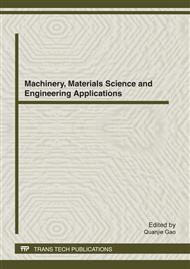p.304
p.310
p.316
p.322
p.328
p.334
p.340
p.345
p.350
Internal Common-Mode Current Flow Path of Induction Motor
Abstract:
When induction motor is directly driven by PWM power converter, high-frequency common-mode current will be generated inside the motor due to the high-frequency common-mode voltage load. So in this paper, on the basis of the analysis of the coupling effect of the parasitic elements on high-frequency current which include elements between induction motor windings, between the winding and the stator and between the winding and the rotor, According to the structural characteristics of the motor, it is obtained that the parasitic element between the first turns of the stator winding coil and ground can provide low impedance flow path for high frequency common mode current, most of the high-frequency common mode current drain into ground through this path, and the motor stator winding has the uniform transmission line characteristics. The correctness of the conclusions is verified by the experimental results of two different induction motor.
Info:
Periodical:
Pages:
328-333
Citation:
Online since:
April 2012
Authors:
Price:
Сopyright:
© 2012 Trans Tech Publications Ltd. All Rights Reserved
Share:
Citation:


